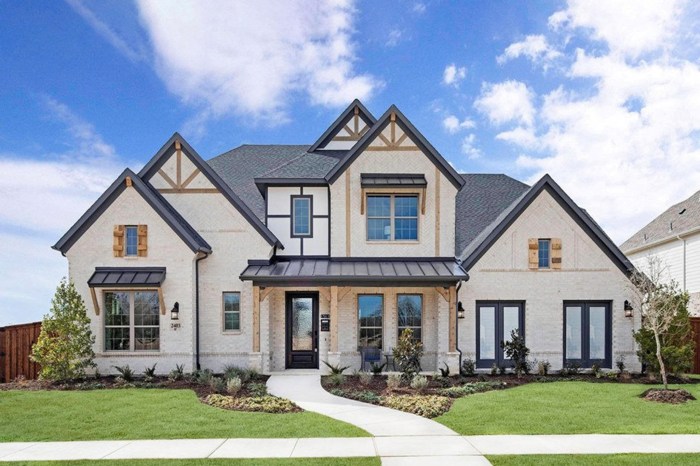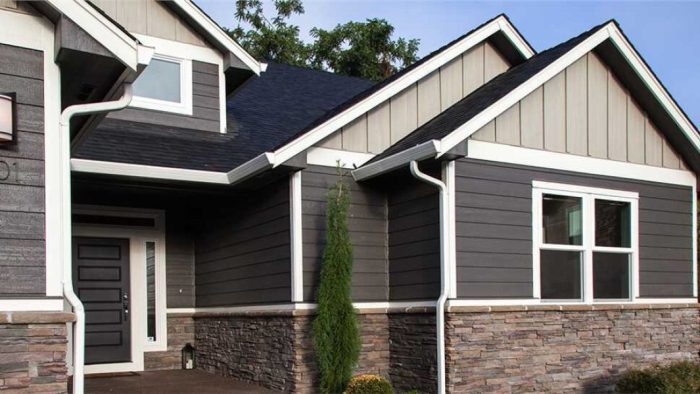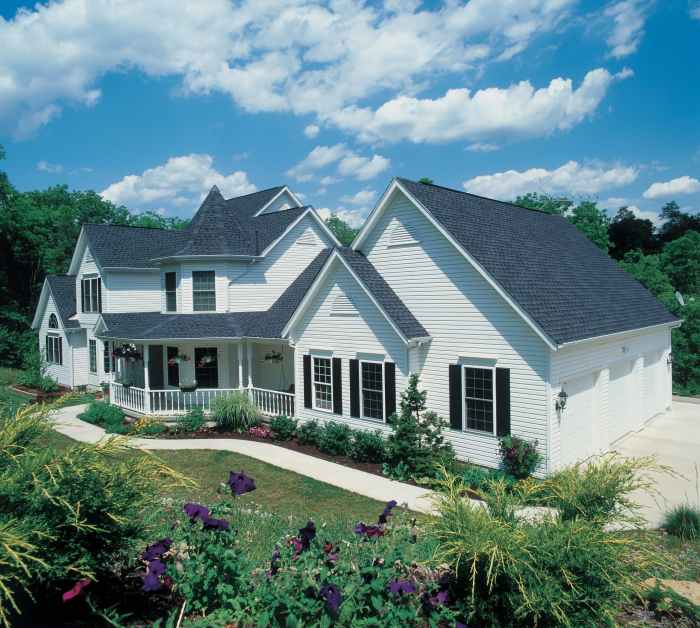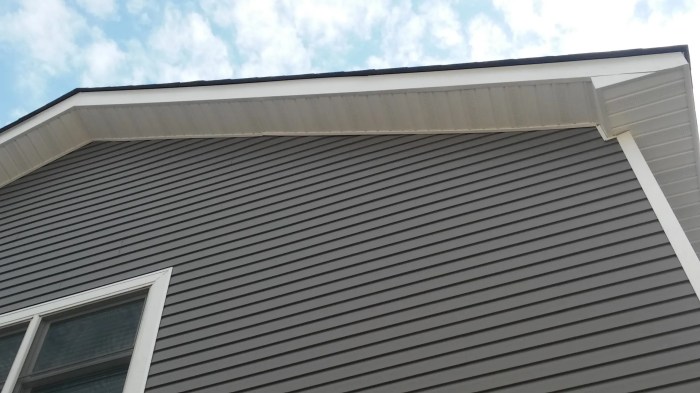Crafting an Elegant Natural Wood Siding House
Embark on a journey into the world of natural wood siding houses, where the beauty of wood meets the practicality of home exteriors. From timeless appeal to sustainable living, this topic delves into the essence of wood siding and its significance in modern architecture.
Explore the various aspects of natural wood siding houses, from installation to maintenance, and uncover the secrets to creating a stunning and durable exterior for your home.
Introduction to Natural Wood Siding Houses
Natural wood siding is a traditional and popular choice for cladding the exterior of houses. It involves using wooden boards or shingles to cover the walls of a building.
One of the key benefits of using natural wood siding for houses is its durability and longevity. When properly maintained, wood siding can last for decades, providing a timeless and classic look to the home.
Popular Wood Species for Siding
- Cedar: Known for its natural resistance to rot and insects, cedar is a popular choice for wood siding.
- Pine: Affordable and readily available, pine is often used for its rustic charm.
- Redwood: With its rich color and resistance to decay, redwood is a premium choice for wood siding.
Aesthetic Appeal of Natural Wood Siding
Natural wood siding houses exude warmth and character, creating a cozy and inviting atmosphere. The varying grain patterns and colors of different wood species add a unique and natural beauty to the exterior of the home.
Types of Natural Wood Siding
When it comes to natural wood siding, there are several types available, each with its own unique characteristics and suitability for different architectural styles.
Shingles
Shingles are wooden pieces that are typically sawn or cut into small, thin pieces. They are often used for a more traditional and rustic look, adding texture and dimension to a house's exterior. Shingles are suitable for Cape Cod, Cottage, and Craftsman-style homes.
Clapboard
Clapboard, also known as bevel or lap siding, consists of long, overlapping boards that create a timeless and classic appearance. This type of wood siding is versatile and can complement various architectural styles, including Colonial, Victorian, and Farmhouse.
Board and Batten
Board and batten siding features wide vertical boards with narrow strips (battens) covering the joints. This style provides a rustic and charming look, perfect for Tudor, Rustic, or Mediterranean-inspired homes.
Comparing Durability and Maintenance
While all types of wood siding require regular maintenance to prevent rot and decay, some may be more durable than others. Clapboard siding, for example, is known for its longevity and resistance to pests, making it a popular choice for many homeowners.
On the other hand, shingles may require more frequent maintenance due to their smaller size and susceptibility to moisture.
Installation Process
When it comes to installing natural wood siding, there are several important steps to follow to ensure a successful and long-lasting installation. It's essential to have the right tools, materials, and knowledge of the process to avoid common challenges and achieve a beautiful finish for your home.
Steps Involved in Installing Natural Wood Siding
- Prepare the surface: Ensure the surface where the siding will be installed is clean, smooth, and free of any debris or existing siding.
- Measure and cut the siding: Take accurate measurements of the area to be covered and cut the wood siding to fit accordingly.
- Apply flashing and moisture barrier: Install flashing around windows, doors, and corners to prevent water infiltration. Apply a moisture barrier to protect the wood from moisture damage.
- Install the siding: Start from the bottom and work your way up, overlapping each piece to create a weatherproof barrier. Use galvanized nails to secure the siding in place.
- Finish and seal: Once all the siding is installed, apply a protective finish or sealant to enhance the wood's durability and appearance.
Tools and Materials Required for Installation
- Tools: Hammer, tape measure, circular saw, level, nail gun, chalk line, utility knife.
- Materials: Natural wood siding, flashing, moisture barrier, galvanized nails, finish or sealant.
Common Challenges Faced During Installation
- Warped or uneven siding pieces.
- Moisture damage if proper barriers are not installed.
- Difficulty in cutting and fitting the siding accurately.
Tips for Ensuring a Proper and Long-lasting Wood Siding Installation
- Follow manufacturer guidelines for installation.
- Inspect and repair any damage to the surface before installation.
- Regularly maintain and inspect the siding for any signs of damage or wear.
Maintenance and Care
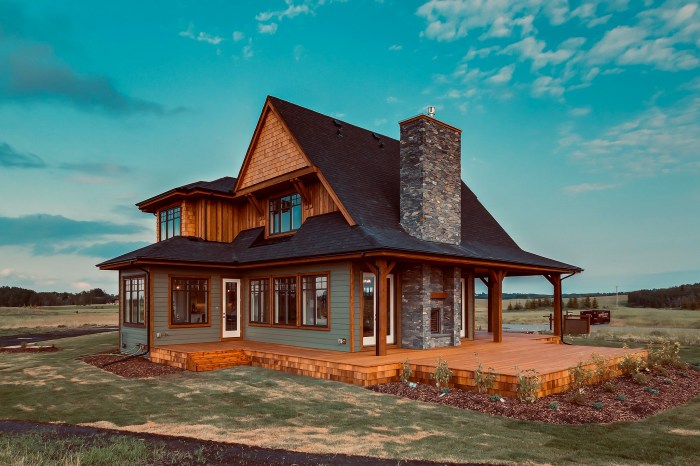
Maintaining and caring for natural wood siding is crucial to preserving its beauty and longevity. By following a regular maintenance routine, you can protect your wood siding from rot, pests, and weather damage, ensuring it stays in top condition for years to come.
Cleaning and Inspection
Regularly clean your wood siding using a mild detergent and water to remove dirt, dust, and grime. Inspect the siding for any signs of damage, such as cracks or rot, and address them promptly to prevent further deterioration.
Staining and Sealing
Apply a quality wood stain and sealer to protect your siding from moisture and UV rays. This helps prevent warping, cracking, and fading, extending the lifespan of your wood siding. Reapply the stain and sealer as needed based on the manufacturer's recommendations.
Protection from Rot and Pests
To protect your wood siding from rot and pests, ensure proper ventilation and drainage around your home. Trim back any vegetation that may be in contact with the siding, as it can hold moisture and attract pests. Consider treating the wood with a termite repellent for added protection.
Maintenance Schedule
Create a maintenance schedule to keep your natural wood siding in top condition. This schedule should include regular cleaning, inspection, staining, and sealing tasks, as well as addressing any repairs or issues as they arise. By following a consistent maintenance routine, you can ensure the beauty and durability of your wood siding for years to come.
Last Recap
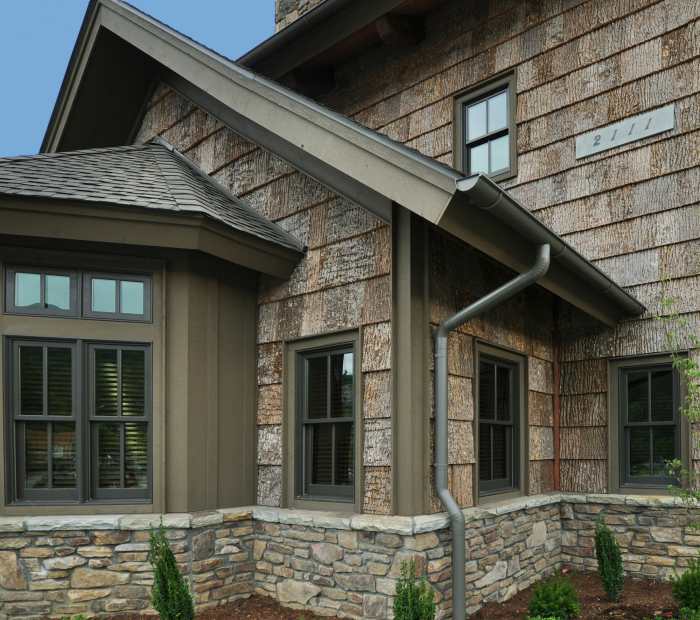
In conclusion, natural wood siding houses offer a blend of charm and functionality that stands the test of time. Embrace the warmth of wood and elevate your home's curb appeal with the enduring beauty of natural wood siding.
Essential Questionnaire
How long does natural wood siding typically last?
Natural wood siding can last anywhere from 20 to 40 years, depending on the wood species used and proper maintenance.
Is natural wood siding eco-friendly?
Yes, natural wood siding is a sustainable choice as it is biodegradable, renewable, and has a lower carbon footprint compared to other materials.
Can natural wood siding be painted?
Yes, natural wood siding can be painted or stained to achieve different aesthetics and protect the wood from elements.
